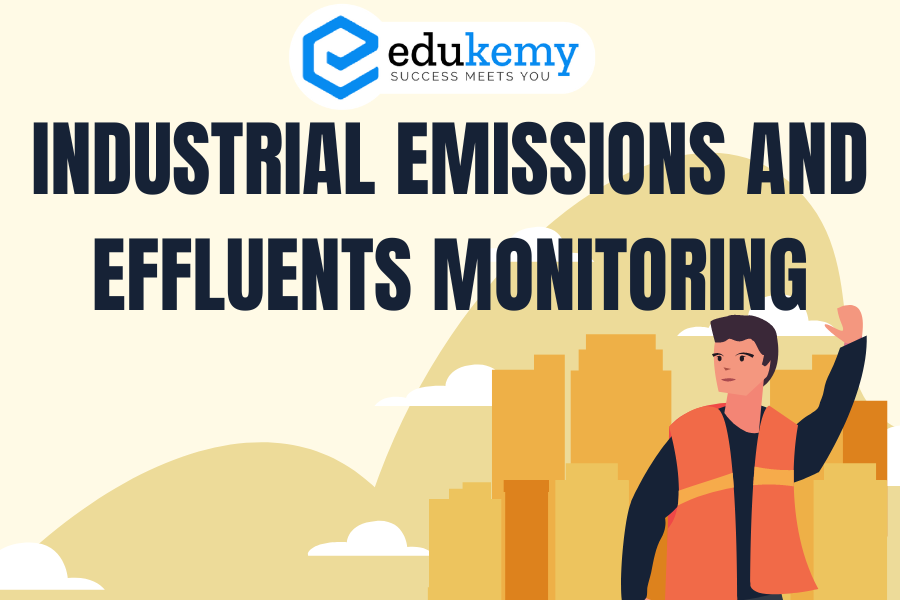Industrial emissions and effluent monitoring stands at the forefront of environmental stewardship, playing a pivotal role in safeguarding our ecosystems and public health. In an era where industrial activities are essential for economic growth, the effective monitoring of emissions and effluents is paramount to mitigate their adverse impacts on air, water, and soil quality. Through advanced technologies and rigorous regulatory frameworks, industries can track, analyze, and mitigate their environmental footprint, ensuring compliance with environmental standards while fostering sustainable development. This proactive approach not only protects the environment but also promotes innovation and responsible industrial practices, paving the way towards a cleaner and healthier future for generations to come.
Contents
- 1 CEMS AND CEQMS
- 2 FAQs
- 2.1 Q: What are industrial emissions and effluents?
- 2.2 Q: Why is monitoring industrial emissions and effluents important?
- 2.3 Q: How is industrial emissions and effluents monitoring conducted?
- 2.4 Q: What are the regulatory requirements for industrial emissions and effluents monitoring?
- 2.5 Q: How can industries improve their monitoring practices to reduce environmental impact?
- 3 In case you still have your doubts, contact us on 9811333901.
CEMS AND CEQMS
- The Continuous Emission Monitoring System (CEMS) and Continuous Effluent Quality Monitoring System (CEQMS) serve as real-time monitoring systems for air and water pollution, respectively.
- The Continuous Ambient Air Quality Monitoring System (CAAQMS) is specifically utilized for the real-time monitoring of ambient air quality.
- A continuous monitoring system consists of sampling, conditioning, and analytical components, along with software designed to deliver direct, real-time, and continuous pollution measurements.
- This involves analyzing representative samples of air and water being monitored.
- The implementation of such systems is crucial for enhancing compliance enforcement by adopting credible pollution monitoring and reporting practices.
- When appropriately installed, these systems facilitate the acquisition of accurate and real-time data at higher frequencies, minimizing manual intervention and thereby strengthening the pollution control regime.
FUNCTIONS OF THE CENTRAL POLLUTION CONTROL BOARD
Roles and Responsibilities of the Central Board at the National Level:
- Advisory Role:
- Provide advice to the Central Government on matters pertaining to the prevention and control of water and air pollution, as well as the enhancement of air quality.
- Program Planning and Execution:
- Formulate and execute nationwide programs aimed at preventing, controlling, or abating water and air pollution.
- Coordination and Conflict Resolution:
- Coordinate activities among State Boards and facilitate the resolution of disputes among them.
- Technical Assistance and Guidance:
- Offer technical assistance and guidance to State Boards.
- Conduct or sponsor investigations and research concerning water and air pollution and methods for their prevention, control, or abatement.
- Training Programs:
- Plan and organize training programs for individuals involved in initiatives related to the prevention, control, or abatement of water and air pollution.
- Mass Awareness Programs:
- Organize comprehensive mass awareness programs through mass media channels addressing the prevention, control, or abatement of water and air pollution.
- Data Collection and Publication:
- Collect, compile, and publish technical and statistical data related to water and air pollution, along with effective measures for their prevention, control, or abatement.
- Manuals, Codes, and Guidelines:
- Develop manuals, codes, and guidelines concerning the treatment and disposal of sewage, trade effluents, stack gas cleaning devices, stacks, and ducts.
- Information Dissemination:
- Disseminate information on matters related to water and air pollution, emphasizing their prevention and control.
- Setting Standards:
- Establish, modify, or annul standards for streams, wells, and air quality in consultation with the concerned State Governments.
- Prescribed Functions:
- Perform any other functions as prescribed by the Government of India in the context of water and air pollution control.
FAQs
Q: What are industrial emissions and effluents?
A: Industrial emissions refer to the release of gases, particulates, and other pollutants into the atmosphere during industrial processes, such as manufacturing, energy production, and chemical processing. Effluents, on the other hand, are liquid waste streams discharged into water bodies, often containing pollutants like heavy metals, chemicals, and organic compounds.
Q: Why is monitoring industrial emissions and effluents important?
A: Monitoring industrial emissions and effluents is crucial for assessing environmental impact and ensuring compliance with regulations. It helps identify sources of pollution, measure pollutant levels, and track trends over time. Effective monitoring enables industries to implement corrective measures, reduce environmental harm, and protect human health and ecosystems.
Q: How is industrial emissions and effluents monitoring conducted?
A: Monitoring involves the use of various techniques and instruments to measure emissions and effluents. This may include continuous emission monitoring systems (CEMS) for gases, particulate matter samplers, water quality sensors, and remote sensing technologies. Sampling and analysis methods are employed to quantify pollutant concentrations, while data logging systems record and store monitoring data for analysis and reporting.
Q: What are the regulatory requirements for industrial emissions and effluents monitoring?
A: Regulations governing industrial emissions and effluents monitoring vary by region and industry sector. Typically, regulatory agencies set emission standards, discharge limits, and reporting requirements to control pollution and protect the environment. Industries must install monitoring equipment, conduct regular inspections, and submit compliance reports to demonstrate adherence to regulatory standards.
Q: How can industries improve their monitoring practices to reduce environmental impact?
A: Industries can enhance monitoring practices by investing in advanced monitoring technologies, implementing pollution prevention measures, and adopting best management practices. Continuous improvement initiatives, such as energy efficiency upgrades and waste minimization programs, can help reduce emissions and effluents at the source. Collaboration with regulatory authorities and stakeholders fosters transparency and accountability, driving sustainable industrial practices.
In case you still have your doubts, contact us on 9811333901.
For UPSC Prelims Resources, Click here
For Daily Updates and Study Material:
Join our Telegram Channel – Edukemy for IAS
- 1. Learn through Videos – here
- 2. Be Exam Ready by Practicing Daily MCQs – here
- 3. Daily Newsletter – Get all your Current Affairs Covered – here
- 4. Mains Answer Writing Practice – here

